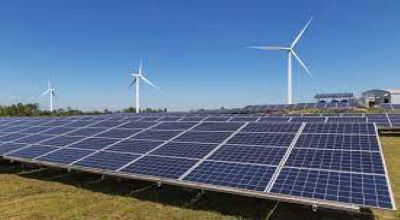Implementation projects in the state predicted to result into an estimated cost saving of Rs. 0.22/kWh for industrial consumers

Wind Solar Hybrid (WSH) has fast emerged as the most preferred form of renewable energy in Gujarat, reveals the latest research report released by Bridge To India that credits the state's favorable policy and higher renewable power demand from consumers for the popularity of WSH projects with each passing day.
As per report, the implementation of WSH projects is predicted to result in an estimated cost saving of Rs. 0.22/kWh and Rs. 1.72/kWh for industrial consumers in Gujarat and Karnataka respectively. It expects substantial capacity addition, about 700 MW in these two states in the coming year.
In a major policy reform, Gujarat recently issued regulation, offering attractive incentives to WSH projects - 50% exemption on cross subsidy surcharge (CSS) and additional surcharge (AS), and 100% exemption on electricity duty (ED) for 25 years for projects commissioned before March, 2023.
The leading renewable companies such as Continuum, CleanMax, AMP Energy India, and Amplus are setting up WSH plants across Gujarat. However, the WSH market is slow to take off primarily due to lack of suitable sites with attractive wind and solar resources. Many developers are also reluctant to develop WSH projects because of complex technology and operational factors.
Among the major challenges is that Gujarat does not provide approvals for group captive projects. Regulation released in May 2020 defines captive plants as those with 100% equity investment by the offtaker. However, it was overturned by the state regulator in July 2021.
Gujarat’s net metering policy is only for the CAPEX model system. The size limit is 1 KW – 1 MW subject to 50% of sanctioned load (100% for MSMEs). Recently the state issued retail supply tariff orders for FY 2022, choosing to keep tariffs unchanged at last year’s levels.
WSH is very attractive for commercial and industrial (C&I) consumers. It offers more stable power output in comparison to standalone wind and solar projects. There is greater financing savings due to higher capacity utilization factor of 45-55% in comparison to standalone solar (22-26%) and wind (33-38%) projects – particularly useful in states like Rajasthan where overall capacity is capped at connected load of the consumer. WSH has marginally lower cost due to better utilization of transmission infrastructure.
C&I renewable power penetration is the highest in Karnataka and Tamil Nadu at 25% and 23% respectively. But growth is picking up in other states including Gujarat, Maharashtra, Uttar Pradesh, and Chhattisgarh. Gujarat has a short term window until FY 2023 for WSH projects. Maharashtra and Uttar Pradesh have untapped markets, but delays in approvals are still very common.
Vibrant policy to drive Gujarat’s emergence as renewable hub
During 2018, the Gujarat government announced WSH power policy aimed at making optimum utilization of the land and grid. The policy, which has a coverage period of five years, provides encouragement to renewable power producers supplying to the grid as well as to those having captive use. As per policy, the developer of an existing solar project will now be able to use the same land for setting up and solar power units. Also, it will allow them to use the common transmission line to evacuate the power.
The benefits of the new policy will be applicable for a period of 25 years or lifetime, whichever is earlier. The electricity generated from wind solar hybrid projects will be exempted from energy charges. The policy provides 50 per cent concession for cross subsidy surcharge and additional surcharge when the generated energy is sold to a third party. For the captive users, the hybrid projects will have complete waiver on cross-subsidy surcharge and additional surcharge. Also, it will qualify for 50 per cent relaxation in wheeling charges and distribution loss.
To boost electricity generation from renewable energy sources, several mega projects are being implemented across the state. In December 2020, Prime Minister Narendra Modi laid the foundation stone for a 30,000 MW hybrid (solar and wind) renewable energy park in Kutch. Spread across 72,600 hectares, the park is being set up with an investment of Rs. 1.5 lakh crore.
Based on the dynamic policy decisions, experts are predicting that in the next 3-5 years, the state will become a global hub for the renewable energy sector. The installed capacity to generate power from renewable energy sources in the state is expected to surge to over 38,000 MW by 2025 and over 61,000 MW by 2030.
Subscribe to our newsletter & stay updated.